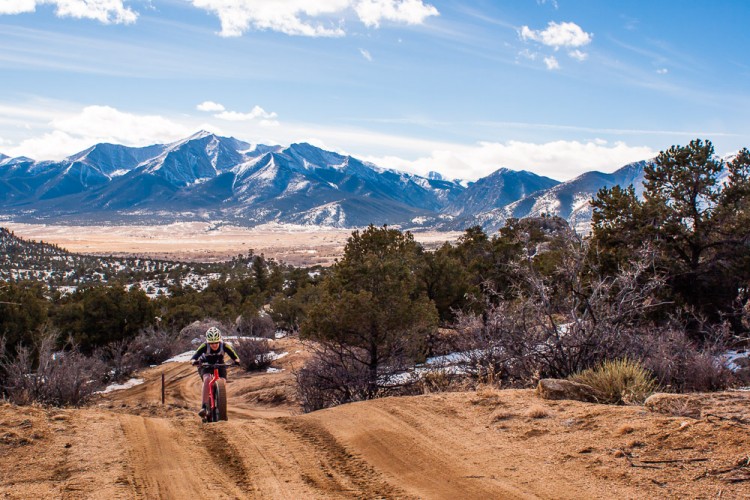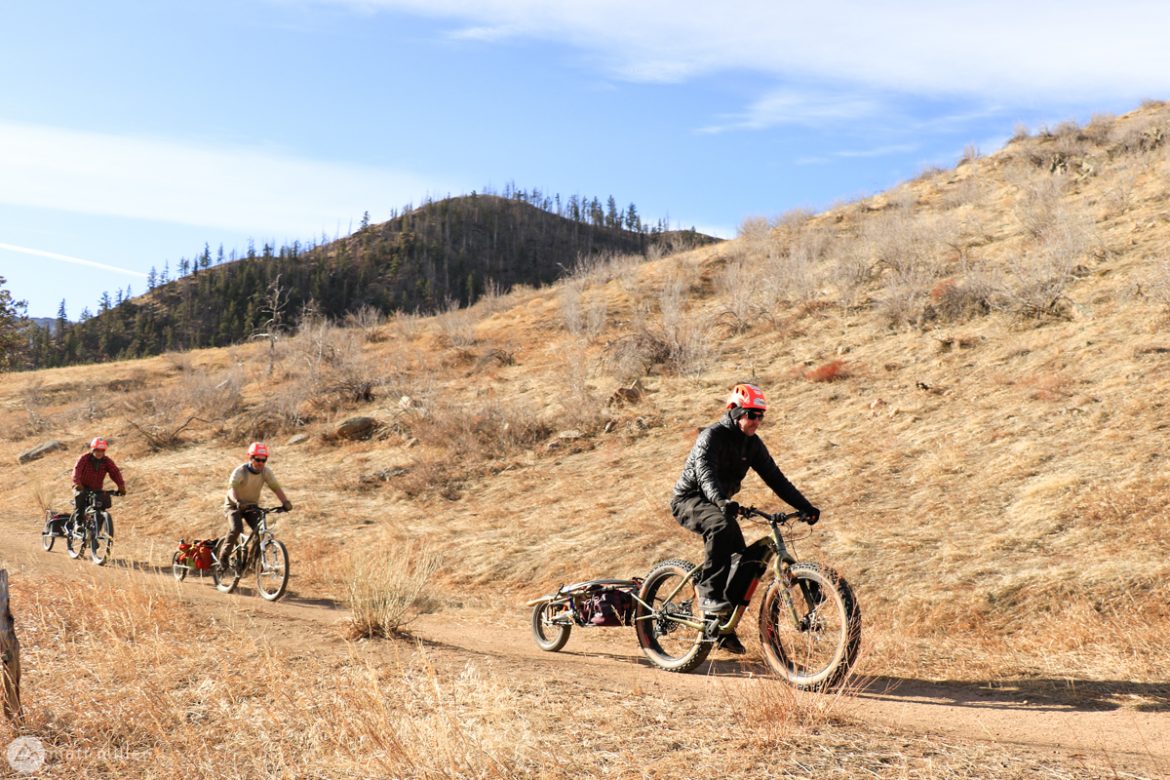
Spend enough time talking to a mountain bike advocacy organization, and they’ll likely tell you that there aren’t enough trail days on the calendar to complete the needed maintenance on the area’s trails, especially if the said area has distinct seasons. Some clubs don’t start dig days until late spring and end them before fall is over.
Compound this with the fact that volunteers are tough to attract in the first place, and land management agencies are rarely ever caught up on needed trail maintenance, and it means that the bulk of the trails we ride are hardly ever in the condition that they should be.
In Ft. Collins, Colorado this problem has been felt acutely by the local MTB organization, Overland Mountain Bike Association. OMBA has been around in one form or another since the mid-1990s when they transitioned from the Diamond Peaks Mountain Bike Patrol into the Overland Mountain Bike Club. The club built relations with their local land managers and took on more work days over the years and formalized as OMBA in 2018, an IMBA Local chapter.
In the past two years, wildfires and floods have devastated trails in Northern Colorado, resulting in washed out gulleys and trails, and masses of burnt trees that remain as fall hazards along singletrack. These are maintenance projects that stack on top of normal trail use issues like erosion and trail widening. In 2019, inspired by a sister mountain bike club out of Aspen, OMBA started a Trail Agents program with the approval of the Arapahoe and Roosevelt National Forests.
With the Trail Agents program, OMBA and the Roaring Fork Mountain Bike Association can enable volunteers with the right training to carry out trail maintenance on their own, when they’re out for a ride or when they have a day off and feel like getting some trail work done on their own. They’re kind of like the spec ops groups of trail workers; smaller, more mobile, and with more training than the organized battalions of volunteers who show up on a dig day with a trail captain.
A year and a half ago, OMBA started the program with five or six volunteers and a lot of work to be done. Within a few days, they had cleared about 150 hazard trees, many leftover from the High Park fire in 2012. The High Park fire burned almost 90,000 acres in the Poudre Canyon, just north of Ft. Collins and home to several trail networks on Forest Service managed land.
OMBA had hoped to make a dent in 2020 on maintenance projects, but first came coronavirus, and then another massive fire through the Poudre Canyon, the Cameron Peak fire.
In 2012, the High Park fire reigned as the 2nd largest fire in Colorado’s history, but five fires since have taken the top spots, including the Cameron Peak fire, which came eight years later in nearly the same area. The Cameron Peak fire burned almost 2.5 times as much acreage as the High Park blaze from mid-August until the beginning of December.
In January, I joined OMBA’s Trail Agents for a day of work at the Hewlett Gulch trail. Warmer temperatures throughout the 2020/21 winter have made for an extended season which the group has taken advantage of.
Executive Director of OMBA Kenny Bearden filled me in on what the volunteers have been doing ahead of my drive north.

“They get on their mountain bikes, they have packable trail tools, they head out on a ride and if they see something that’s an issue they can fix it and keep riding,” he said. With a basic Trail Agent training, volunteers can use hand tools for corridor and trail surface improvement. OMBA has added some additional training and some of their volunteers can reroute minor sections of trail if necessary.
Trail Agent volunteers with OMBA can also get Sawyer certified and carry in chainsaws to remove hazardous fall-risk trees. This summer, they’ll continue to work up the Poudre Canyon, trying to help get continuously burned trails back to snuff. Bearden hopes the program will pave the way for additional MTB opportunities in the Forest Service district.
“There’s always a priority to get new trails and systems identified and built, but it’s hard to justify adding a new 20-mile trail system when the Ranger District is already ten years behind maintenance on existing trails.” Then, there’s the issue of current trails being so poorly maintained that users are deterred from visiting. “A lot of these trails are not used that often because they are in such shitty condition. People don’t hear about them because they’re not that popular, or they know about them and don’t want to ride them.”
Hewlett Gulch isn’t one of those. It’s regularly visited by residents in Larimer County, but needs work. All geared up, I hopped behind three of OMBA’s Trail Agents and we pedaled into the forest. The Trail Agents towed their mini-trailers loaded with a pile of heavy tools behind their bikes, one of them weighing at least 60 pounds. At Hewlett Gulch, OMBA has been cutting down burnt and hazardous trees that are near the trail, and constructing foot bridges for the dozen or so creek crossings along the trail.
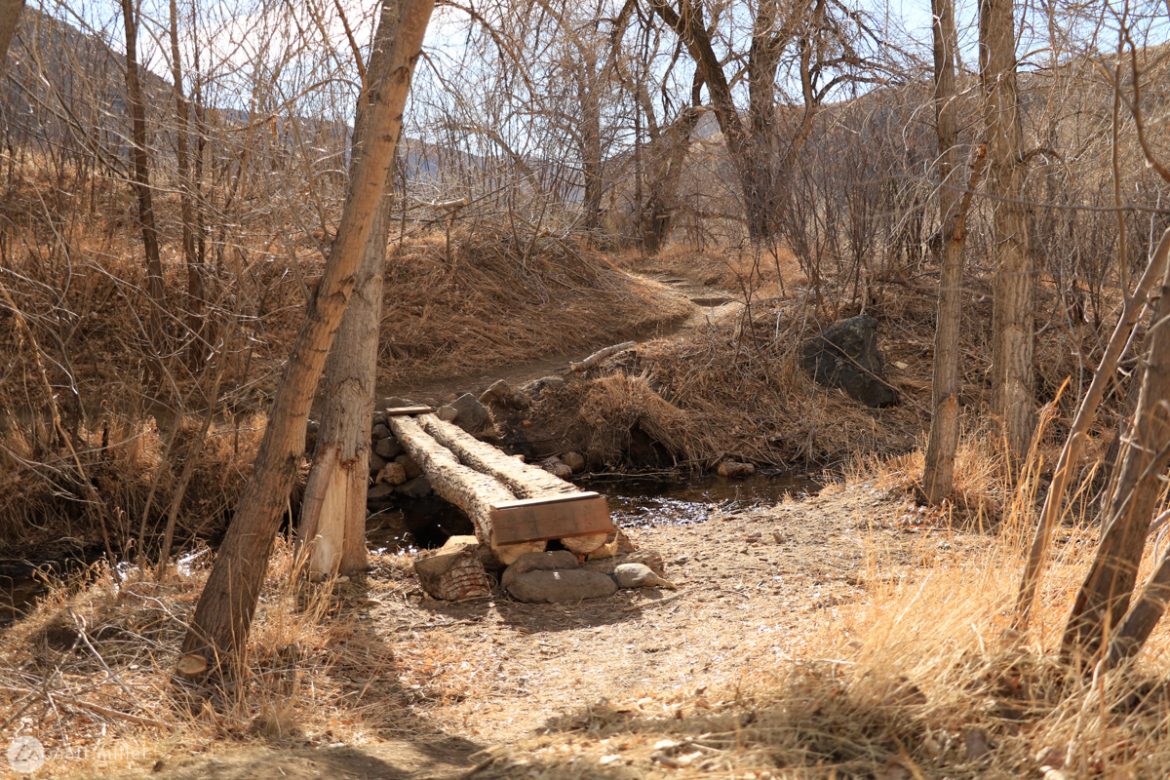
Hikers have been tossing rocks in the creeks to try and link together a dry crossing, but this makes it difficult for equestrians and mountain bikers to cross. With the foot bridges, they hope that the hikers will utilize those and leave the creek bed as smooth as possible.
The three volunteers were on their 9th creek crossing that day. As we passed regular hikers on the sunny winter morning, they thanked the volunteers and complimented their backcountry construction skills.
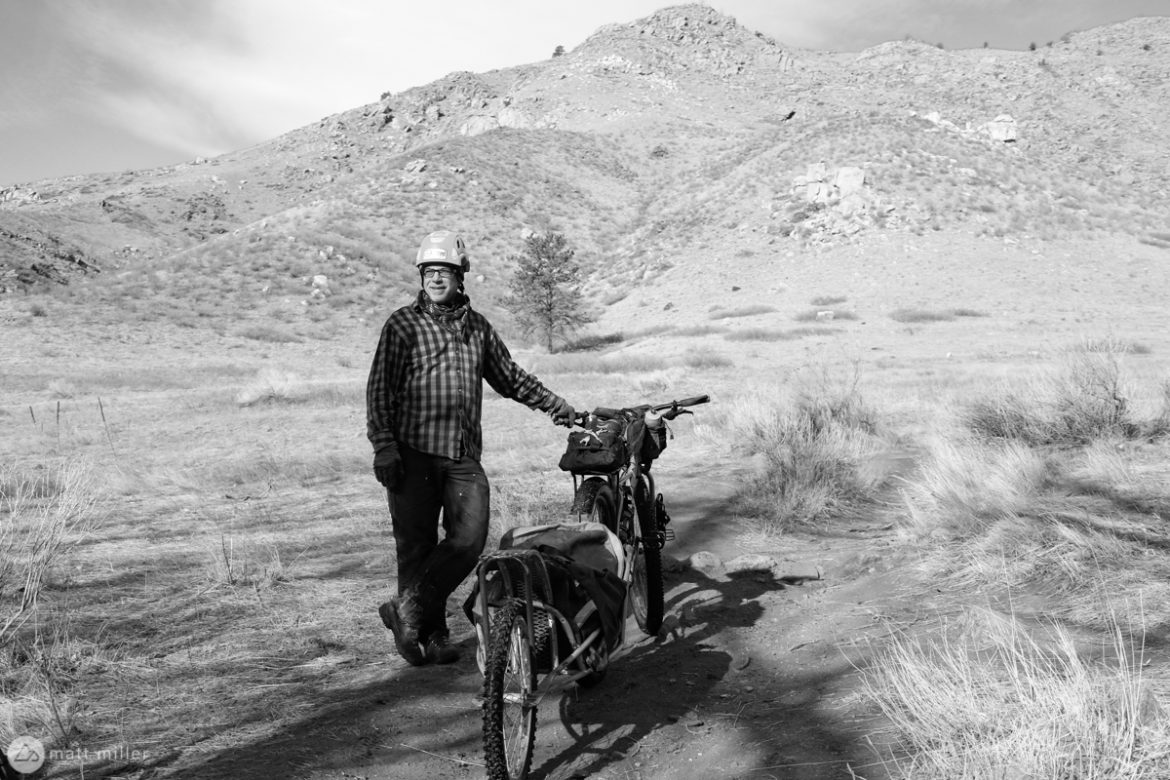
“The bridges look great, guys!” Volunteer and OMBA Trail Agent coordinator David Kahl says that they’ve been hearing that all week. He smiled and looked back at one particularly polished looking bridge.
After we reached the crossing, a little over two miles in, volunteer Craig Yonkers picks out the tree that they’ll use for the day’s foot bridge build. Skinny, charred, and leaning over, it’s an obvious choice for him.
Yonkers, who is Sawyer-certified and an experienced wilderness firefighter, revved up the Stihl 28″ bar chainsaw and started cutting. The rest of us stood back, well out of range of the falling tree. I hadn’t ever been around a tree-cutting operation, so in my mind, the 50+ foot tree could fall anywhere when he starts sawing into it, but it lands exactly where he intended. Yonkers has been furloughed from his job with the City of Fort Collins, and is using his free time as a steward.
He started working with OMBA to find out more about the seemingly limited trail access for mountain bikers in Northern Colorado. He and the third volunteer, Eric Unger, talked about it. Their conversation captures the spirit of many mountain bike advocacy orgs stuck between a sense of duty to help improve the trails we use and the hope that hard work might pay off with better spots to ride in the future.
“The trails that we have up the Poudre have a lot of potential to be really sweet mountain bike spots,” said Unger. “Right now they’re OK. But the stuff we’re doing right now and the stuff we did up at Young’s, have the potential to be a little bit more of a destination. We’re just going to have to keep doing what we’re doing now for a while.”
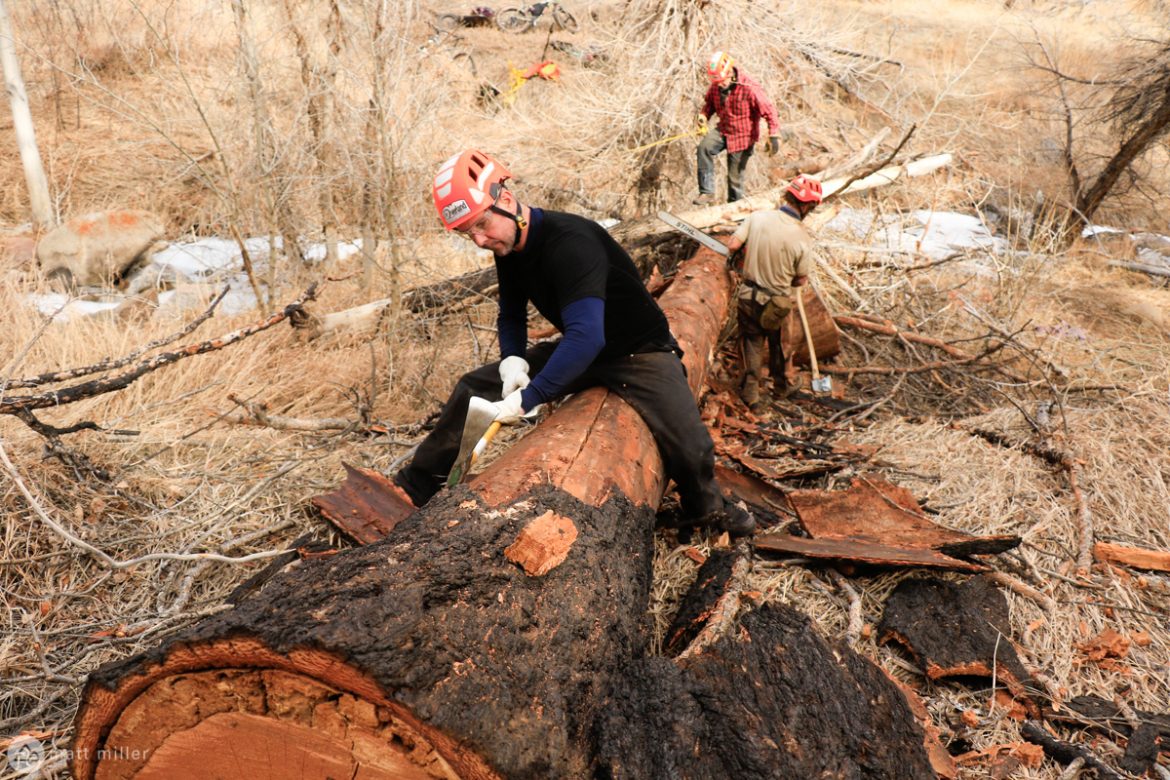
“It’s hard though, because they have almost no money,” says Yonkers of the Forest Service. “So the prospect for new trails is almost non-existent.”
After the High Park fire in 2012, which subsumed the Young Gulch trail just a few miles up the road, the trail was shut down. OMBA helped to reopen it, just in time for record flooding in 2013 which completely wrecked the trail again. The Forest Service was ready to decommission the trail, but OMBA argued to help reopen it. Young Gulch remained closed until 2019 when it was reopened with the help of OMBA and other volunteer groups.
Yonkers thinks back on the closure and the limited trails available in the Poudre Canyon. “[It’s] insane, because between the entrance of the canyon and then probably almost to Rustic, there’s three trails. So not much. So they’re willing to let a third of that disappear. That just goes to show priorities, but I think most of that’s just based on the lack of personnel and funding.”
He’s not wrong. District Ranger Kathleen Donahue wrote in favor of the Trail Agent program to the Colorado Parks and Wildlife State Trails Committee in 2019.
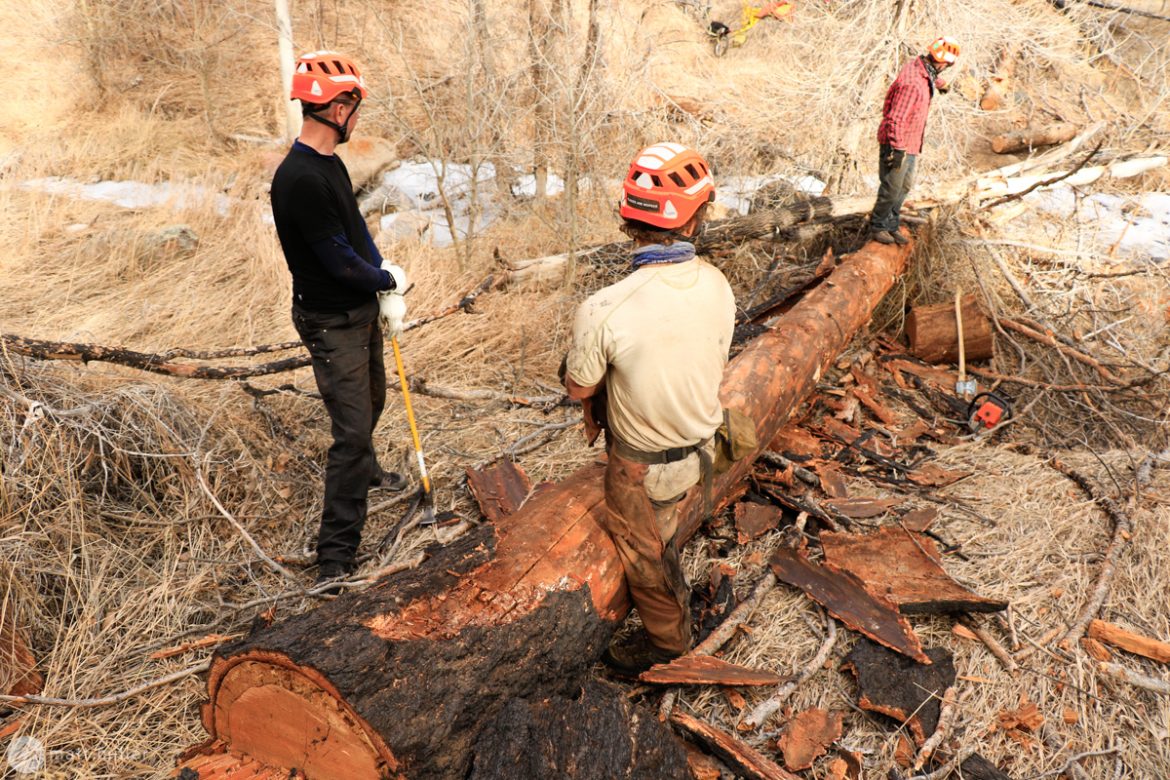
“This project will substantially address the significant maintenance backlog The Canyon Lakes Ranger District is experiencing with our natural surface trails. Increasing volunteer stewardship in this level will help increase the quality of experiences had by our 300,000+ annual visitors, mitigate the natural resource impacts of our rapidly growing trail user population, eliminate the backlog of much-needed formal trail surveys, and bring a new level of volunteer stewardship to the Northern Front Range region.”
Just a year ago, Forest Service Chief Vicki Christiansen talked of the importance in working with groups and individuals to reduce the $300 million maintenance backlog on the agency’s trail systems.
“In 2019, organizations and individuals contributed more than 1.5 million hours on the maintenance and repair of more than 28,000 miles of trail, and we are extremely grateful for their continued support and hard work. However, we must find more ways to erase the backlog. We still have much more work to do, and this is our call to organizations and individuals to share with us innovative ideas and boots-on-the-ground help.” The statement said that roughly 120,000 of their 159,000 mile total is in need of some form of maintenance or repair.
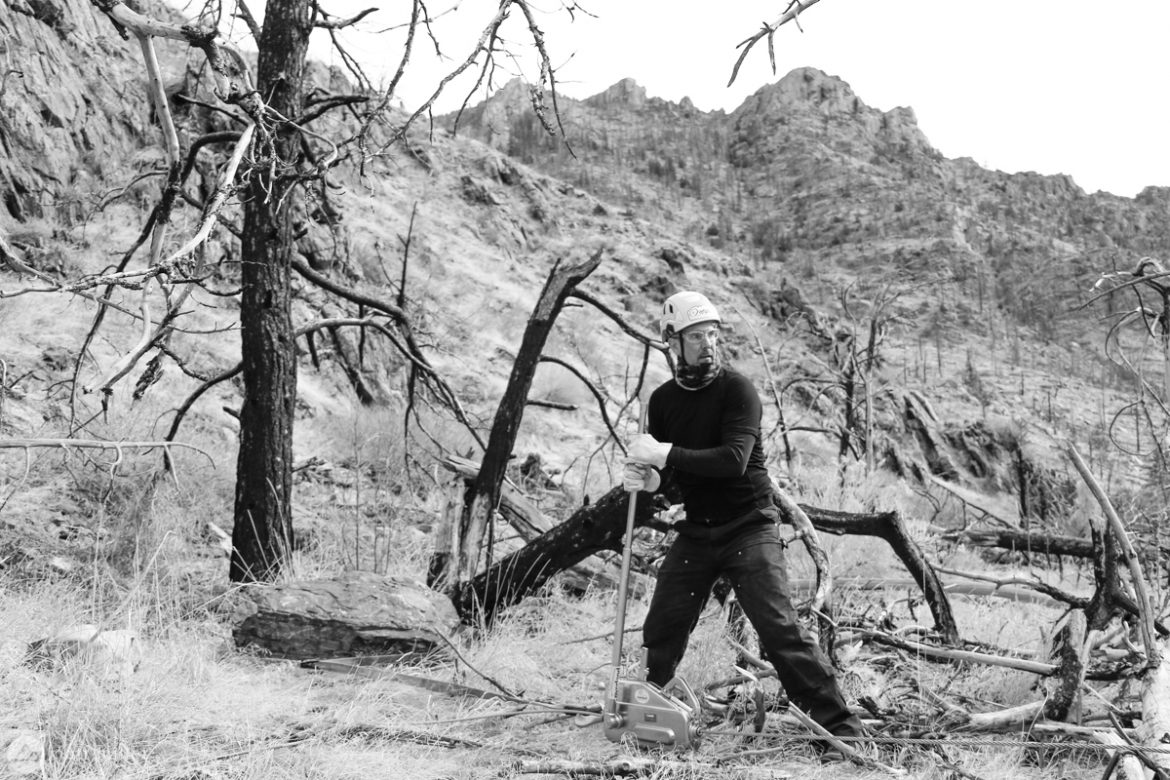
After the fallen tree was cut to the right length and shucked of its burnt skin, Unger took command of a Griphoist, anchored to a boulder, and pulled the tree inch by inch over the crossing.
While the three OMBA Trail Agents on this day show how much a small group can accomplish with the right training and tools, the Trail Agents programs in use by RFMBA and OMBA aren’t this advanced across the board. Most Trail Agents will likely put their training to use with a small and packable handsaw out on a ride.
Mike Pritchard, the executive director of RFMBA, the mountain bike advocacy organization centered around Aspen would call the three “super volunteers.” Pritchard and RFMBA started the Trail Agent program with a common sense approach in mind. There were already people out there working on the trail without approval and since it wasn’t sanctioned, the work would go unreported. RFMBA created a training curriculum with Volunteers for Outdoor Colorado under the Outdoor Stewardship Institute.

The training consists of reading a manual, joining the club for a night of training and discussion, reviewing tools and the appropriate way to work on the trail according to USFS specs, and testing the volunteers’ knowledge. The most important thing though is making sure the volunteers enjoy it, says Pritchard. That ensures that they keep coming back. He also wants Trail Agents working safely, but that seems to come naturally.
“We don’t want anybody doing anything dangerous out there,” he says. “At the same time, mountain bikers as a group are practiced in risk management.”
With the right curriculum and a case to be made, Pritchard pitched the idea to land managers around Aspen, and it’s successfully been implemented with all seven surrounding agencies including the White River National Forest (WRNF), the BLM, Pitkin County, the City of Aspen and Carbondale, and others.
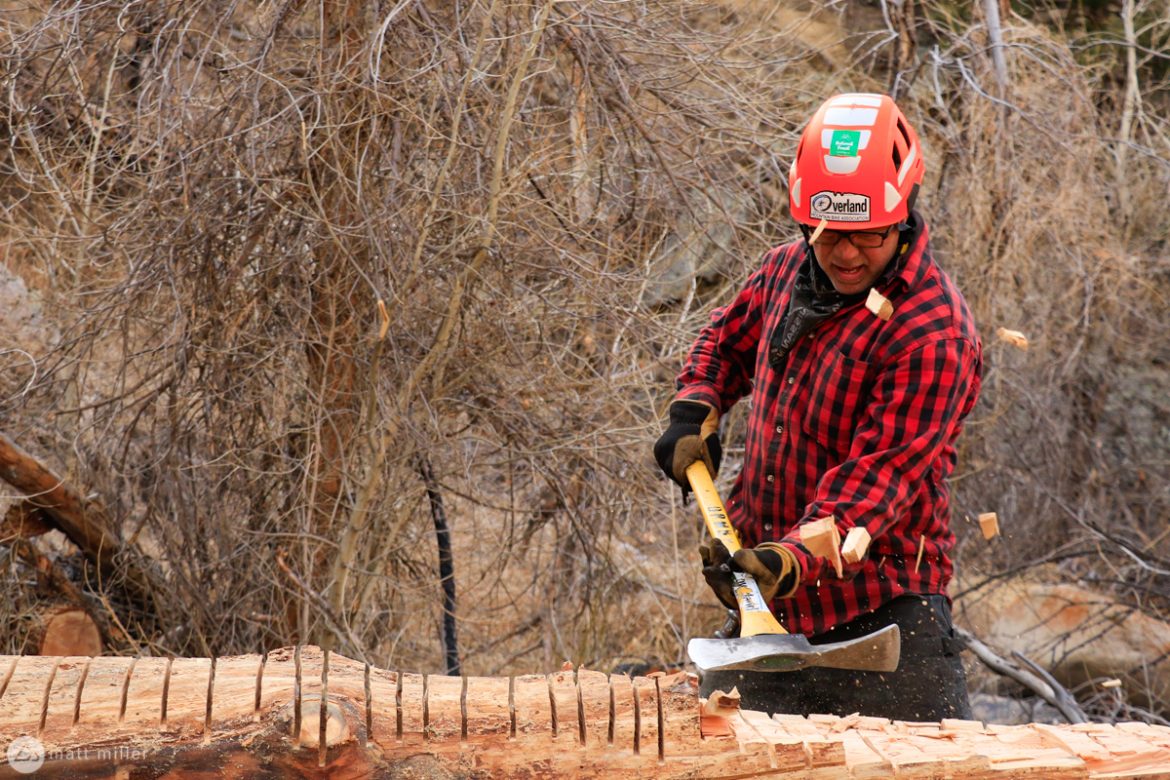
Katy Nelson, the Wilderness and Trails Ranger for the WRNF attended the Trail Agent training through RFMBA. Like the district up north, she saw it as an easy decision to let the Trail Agents get to work.
“The partnerships are pretty crucial to the work we do, honestly,” says Nelson. The WRNF is the most trafficked district in the nation. They keep professional trail crews out all year long maintaining trail, but they can’t always get to everything.
“In general, on our priority trails – and they are priority because they’re high visitation, the public likes them, they get a lot of use – we generally can get to those every year. Generally speaking. Some of our district trails I would say every three years.”
The most common issue is fallen trees, whether they are dead from fire and blown over by the wind or toppled by an avalanche. Budgets and staffing can make it a challenge for the WRNF to get to everything regularly.
“At my level, having a lot of work to do out on the ground, I think it does feel constrained, especially trying to get crew members out doing that work, that’s where I feel the pinch.” Having partners like RFMBA is a great addition to the staffed trail crews the district has. Volunteers can’t take on all the work that a district’s trails requires, but they can help alleviate some of the load.
After the ninth and newest foot bridge has been installed at Hewlett Gulch, Kahl, Yonkers, and Unger packed up their mini-trailers and started cruising back toward the trailhead with the loaded trailers following their lead through rocks and creeks, bouncing side to side. Yonkers tackled two more hazardous trees near the trail on the way. A few more hikers and riders noticed their work and thanked them for the bridges.
With a cold front on the way, the three of them weren’t sure when they could return for the remaining three bridges. That’s the beauty of the Trail Agent program though. They don’t have to put it on the calendar, months in advance. When the three of them have a good day to tackle another bridge, they can work it out amongst themselves.

Mike Pritchard of RFMBA summed up the intent of the Trail Agent program well in our talk, and he’s proud that other clubs have had success too.
“We’ve got to figure out more ways to let people participate rather than saying ‘well, if you can’t make it this Saturday, then that’s the last one of the season.’ We can do better than that. We’re just trying to use common sense and also work within the bureaucracy of these land managers who are worried about liability.”
















